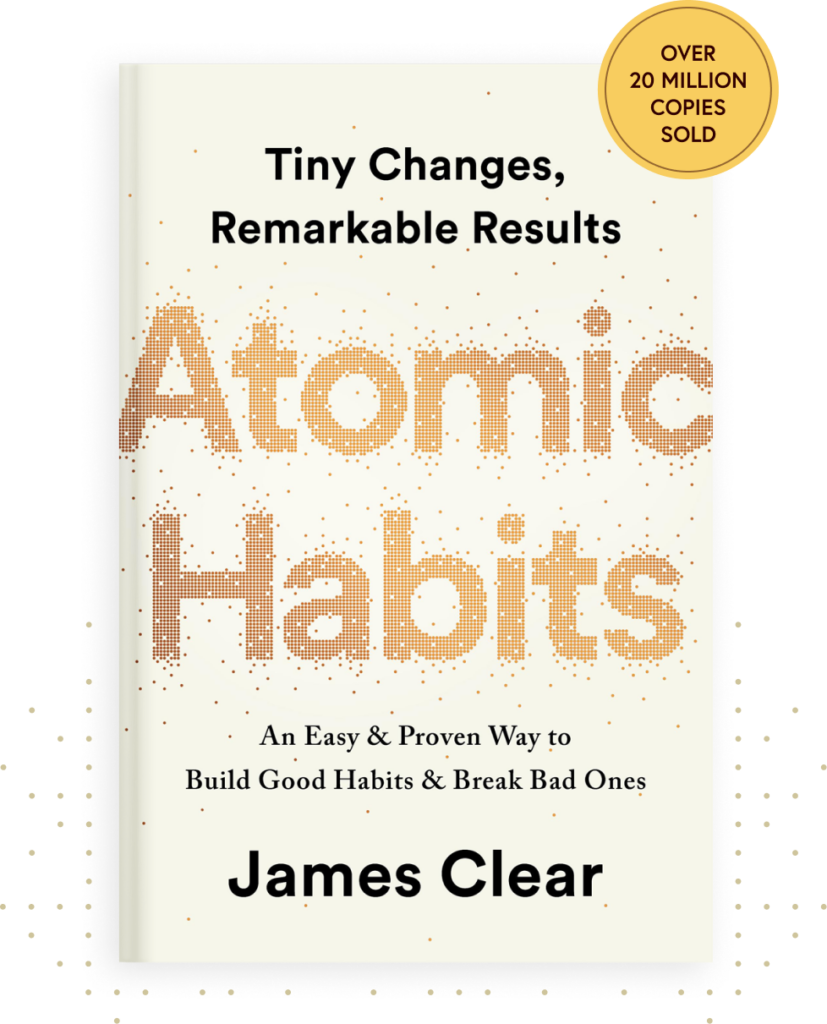We all want to build better habits—whether it’s exercising more, reading consistently, or staying productive. But most people struggle because they focus on big, dramatic changes rather than small, sustainable improvements.
In Atomic Habits, James Clear explains that success is not about making massive changes overnight but about making small, consistent improvements every day. These “atomic” habits, when compounded over time, can lead to extraordinary results.

The Core Idea: The Power of Tiny Gains
Clear introduces the 1% Rule—if you improve by just 1% every day, the results compound over time. Imagine if you get 1% better at something daily for a year; by the end, you’d be 37 times better than when you started!
On the other hand, if you get 1% worse every day, your progress will decline to nearly zero over time. This concept highlights why small habits—good or bad—have a long-term impact on your life.
📈 Small improvements lead to exponential growth.
📉 Small declines lead to failure over time.
The Habit Loop: How Habits Are Formed
James Clear builds on Charles Duhigg’s “Habit Loop” from The Power of Habit and refines it into four simple steps:
1. Cue – A trigger that reminds you to take action.
2. Craving – The desire or motivation to act.
3. Response – The actual behavior (habit) you perform.
4. Reward – A positive outcome that reinforces the habit.
For example:
Good Habit: You want to start reading daily.
- Cue: You place a book on your pillow.
- Craving: You want to relax before bed.
- Response: You read 5 pages.
- Reward: You feel accomplished and sleep better.
Bad Habit: You want to stop scrolling social media.
- Cue: Your phone is next to you.
- Craving: You feel bored and want stimulation.
- Response: You open Instagram and start scrolling.
- Reward: Instant entertainment, making the habit stronger.
Understanding this cycle helps you intentionally design better habits and break bad ones by controlling the cues and rewards.
The Four Laws of Behavior Change
To effectively build or break habits, Clear provides four rules:
1. Make It Obvious (Cue)
- Set up visual reminders for your habits (e.g., place a water bottle on your desk to stay hydrated).
- Use habit stacking: Attach a new habit to an existing one.
- Example: “After I brush my teeth, I will meditate for 1 minute.”
- Track your habits to create awareness.
To break a bad habit: Make the cue invisible (e.g., put your phone in another room to avoid distractions).
2. Make It Attractive (Craving)
- Pair a habit you need to do with one you enjoy (e.g., listen to music only when working out).
- Surround yourself with people who embody the habits you want—our behaviors are influenced by social groups.
To break a bad habit: Reframe it as unattractive (e.g., think of smoking as ruining your health and appearance).
3. Make It Easy (Response)
- Reduce friction: Make good habits easy to start (e.g., keep a book next to your bed for easy access).
- Use the Two-Minute Rule: Start with a version of the habit that takes less than two minutes.
- Example: Instead of “read 30 pages,” start with “read one sentence.”
- Focus on repetitions, not perfection—what matters is consistency, not intensity.
To break a bad habit: Make it difficult (e.g., delete social media apps to create extra steps before using them).
4. Make It Satisfying (Reward)
- Use immediate rewards to reinforce habits (e.g., mark an “X” on a habit tracker every time you complete a task).
- Celebrate small wins to stay motivated.
- Create an identity shift:
- Instead of saying “I want to read more,” say “I am a reader.”
- Instead of “I want to be fit,” say “I am someone who exercises.”
To break a bad habit: Make it unsatisfying (e.g., set up an accountability partner to track your progress).
Breaking Bad Habits: Inverting the Four Laws
To eliminate negative habits, simply reverse the four laws:
- Make it invisible – Remove cues (e.g., keep junk food out of sight).
- Make it unattractive – Associate the habit with negative consequences.
- Make it difficult – Increase friction (e.g., use an app blocker).
- Make it unsatisfying – Add accountability (e.g., tell a friend about your goal).
The Importance of Identity-Based Habits
One of the most powerful takeaways from Atomic Habits is the idea of identity change. Instead of focusing on goals, shift your mindset to who you want to become.
Outcome-Based Thinking:
- “I want to lose weight.”
- “I want to write a book.”
Identity-Based Thinking:
- “I am a healthy person.” (So you make choices like one.)
- “I am a writer.” (So you write every day, even if just for 5 minutes.)
When you see yourself as the type of person who embodies the habit, the behavior becomes automatic.
Final Thoughts: Why Atomic Habits Works
Unlike most self-help books that focus on motivation or willpower, Atomic Habits provides a clear, actionable framework to build better habits and break bad ones.
Key Takeaways
- Small, consistent changes lead to big, long-term results.
- Habits form through a cue-craving-response-reward loop.
- Use the Four Laws of Behavior Change to make habits stick.
- Shift from goal-based habits to identity-based habits.
Challenge for You:
What is one small habit you can start today? Let’s build better habits—one scroll at a time.
Share your thoughts below! What habit are you working on?






